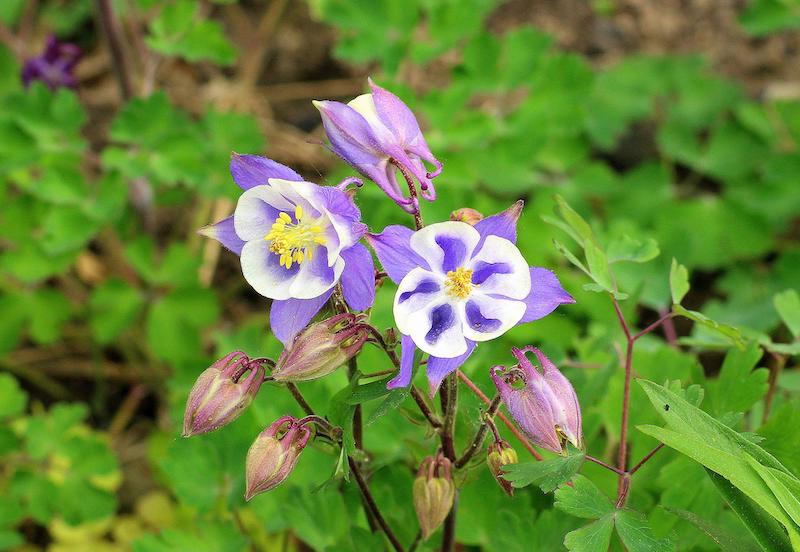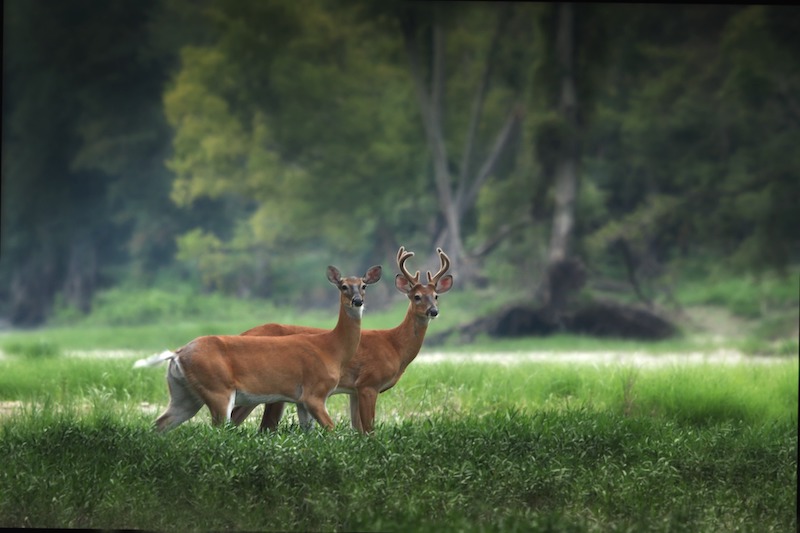Columbine is a great plant for naturalizing in the garden and encouraging pollinators, hummingbirds and other small wildlife. Even though all kinds of wildlife are attracted to Columbine, deer and rabbits tend to leave it alone. Of course no plant is immune to the browsing of a hungry deer. The good news for Columbine is that it is fully dormant at the time deer may be the hungriest and most likely to give it a taste.

According to Rutgers University Columbine is rated as Seldom Severely Damaged on their rating scale from Rarely Damaged to Frequently Severely Damaged.
| Rarely Damaged |
| Seldom Severely Damaged |
| Occasionally Severely Damaged |
| Frequently Severely Damaged |
Keeping Deer Away From Columbine
Since deer rarely eat more than a couple flower buds of Columbine, little needs to be done to protect them. Columbine can be planted next to plants that are highly scented or have very textured leaves. Both of these features are not desirable to deer. If damage is very bad, cages made from hardware cloth and metal conduit can be placed over the plants as a physical barrier. Container-grown Columbine that is placed on decks and patios near the house are less likely to be disturbed.

Will Columbine Come Back After Deer Eat Them?
The answer is yes. Even if the plant is young, it will regrow easily and quite quickly. If deer do nibble here or there, it may help the plant to branch out and produce more flowers. In a well-established area with many naturalized Columbine, any deer browsing may go completely unnoticed. A heavy planting will disguise any damage or missing flowers.
Sources: Rutgers New Jersey Agricultural Experiment Station ‘Landscape Plants Rated by Deer Resistance’ 2018
 |
Author Robbin Small - Published 7-12-2022 |
